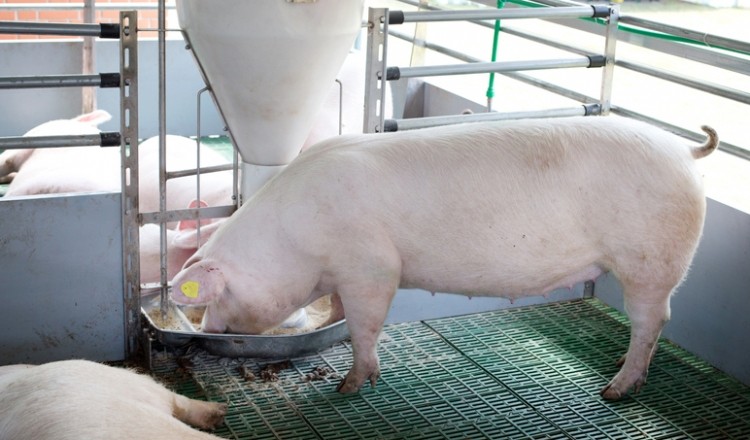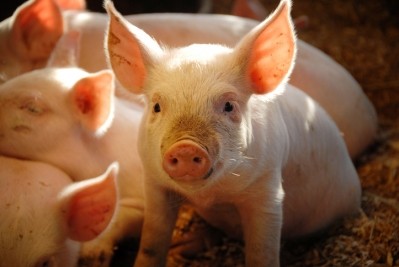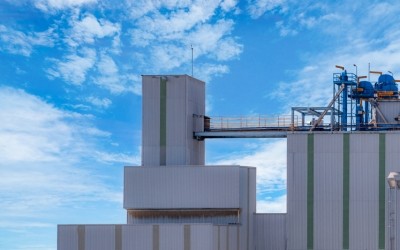Are NIRS tools useful to assess digestible energy of pig feedstuffs?

The researchers, based at the Department of Animal Science, Aarhus University, Denmark, also saw that metabolizable energy (ME) predictions were more precise when done with NIRS calibration models as compared to table values.
The team said their findings represent an advancement on previous reports on the use of NIRS to predict the DE and nutrient content of pig feed in terms of the number of samples used to develop the calibration.
Samantha Noel, one of the authors, told FeedNavigator:
"NIRS is commonly used to determine the chemical constituents of feed, like the amino acid composition, protein, fat, moisture and fibre.
"The novelty is the use of NIRS to determine the energy components in pig feedstuffs and the comprehensive sampling used.
"The NIRS technology that we have been working with regarding nutrient digestibility is not used commercially, as yet, but there is a great potential to incorporate into feed mills and other places to optimize the feed composition in real-time.
"This method appears to be more accurate than other commonly used proxies like feed tables and EDOM (in vitro) while being faster and cheaper. Animal models will remain the gold standard but are very expensive and time consuming to run, so are not feasible for routine testing."
Accurate feed evaluation is critical because feed accounts for two thirds or more of the cost in livestock production and the quality of the feed is key to optimizing performance and minimizing the environmental impact of farmed animal production.
Dataset
The researchers reported that while NIRS can predict physical and chemical properties of feedstuffs, such as the content of crude protein (CP), amino acids, acid detergent fiber (ADF), neutral detergent fiber (NDF), and starch, the limitations of such technology for the nutrient fractions, however, is the size of the database needed to make strong calibrations.
Evaluating the digestibility of different nutrients requires a large database of samples that have been evaluated in vivo, which typically takes many years, they noted.
“Because of this, until now, NIRS calibrations have been developed on limited datasets, and they have only been able to demonstrate the potential for NIRS predictions as the databases have not been large enough to cover the natural variation needed to make a robust model.”
The team hypothesized that NIRS technology could be used to develop robust prediction models of digestible nutrient fractions from feed samples if a sampling database was wide enough.
“In the current study, we have developed and validated calibration models for the chemical constituents, the digestibility of the nutrients, DDE, and ME using NIRS scans from 762 feedstuffs (cereals and supplemental ingredients) and mixed diets. These feedstuffs have been assessed in animal experiments since 1975 allowing for a large collection of feed samples (Just, 1975, Just, 1982b, Just et al., 1983e).”
They said that, to their knowledge, it is the most comprehensive dataset on digestibility of nutrients, DE, and ME in pig feed analyzed by NIRS to date.
Feed and feces combination
Recently, there have also been efforts to use NIRS to estimate the chemical composition and digestibility of the feed from the NIRS spectra of the animal feces (Bastianelli et al., 2015, Schiborra et al., 2015, Nirea et al., 2018), said the Danish experts.
“These studies have shown promising results for estimating the total tract digestibility of the feeds and further hold the potential of being used as a tool for breeding for better total tract digestibility of nutrients. It may be even possible to gain more accuracy in predictions by combining NIRS information from both the feed and the feces for each sample (Paternostre et al., 2019).
“However, estimates from the feed alone are much quicker to obtain than from a feed and feces combination if the information is needed for feed formulation and quality control purposes.”
Source: Animal Feed Science and Technology
DOI: https://doi.org/10.1016/j.anifeedsci.2021.115156
Title: The use of near-infrared spectroscopy (NIRS) to determine the energy value of individual feedstuffs and mixed diets for pigs
Authors: S J Noel, H Johs, H Jørgensen, KE Bach Knudsen














